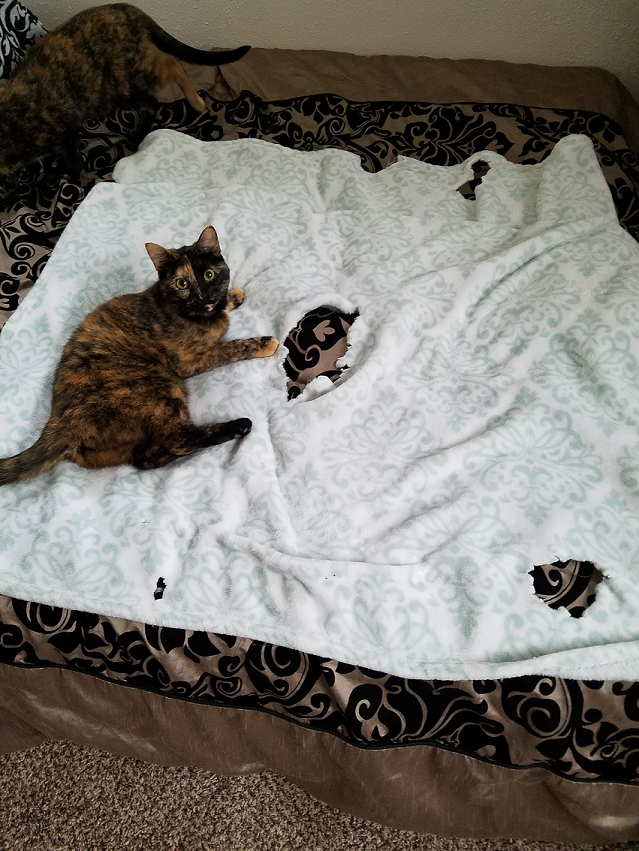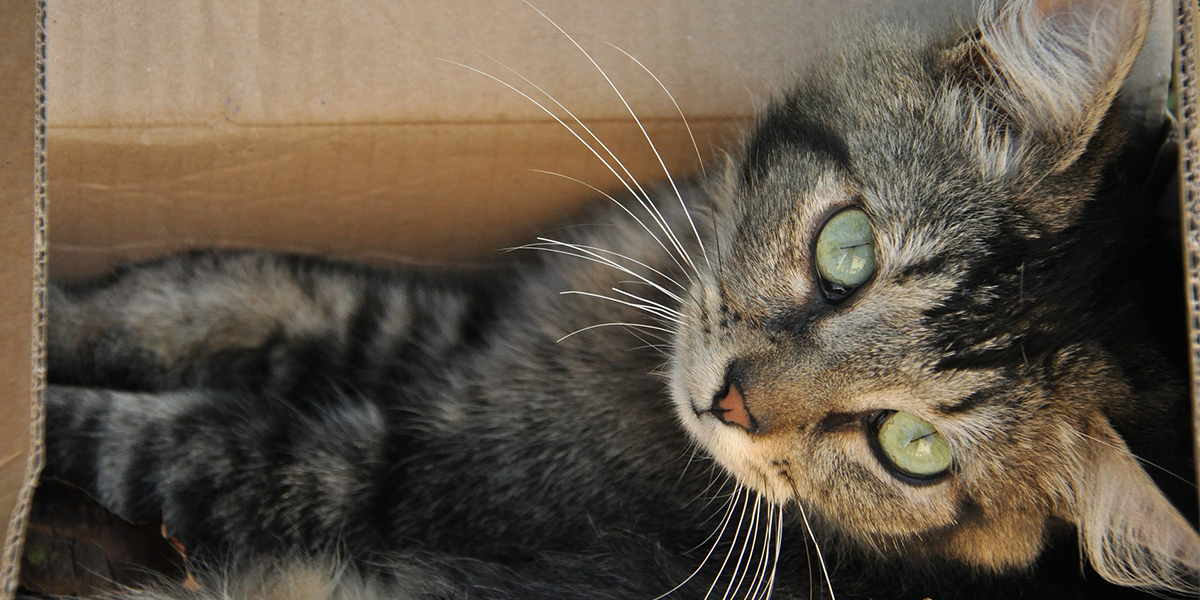pica in cats wood
A cat suffering from pica syndrome will go to all lengths to find and chew its favorite material. Cats with pica seem to possess a passionate zest for licking and sucking on wool chewing wooden objects licking or actually eating plastic paper towels and toilet paper.

What Is Pica Syndrome In Cats Petcetera Animal Clinic
Pica in cats is a potentially serious condition where they have an abnormal compulsion to eat non-food substances such as clothing plastic wood etc.

. Some cats ingested specific items but only chewed others. Pica was directed most commonly at shoelaces or threads followed by plastic fabric other items rubber paper or cardboard and wood. Often the molar teeth are used to chew holes in such materials.
Most commonly associated with wool-sucking a behavior where cats suck or chew on woolen cotton or synthetic material this compulsive disorder can progress to true pica where cats chew on and sometimes ingest anything from wood to litter to plastic grocery bags. While many of our dogs and. Pica occurs more often in puppies than in adult dogs.
This problem called pica is defined as the persistent chewing and consumption of non-nutritional substances that provide no physical benefit to the animal. Pica is the behavioral urge to eat nonedible materials. Stress lack of communication with the owner early weaning from the mother cat.
Before a cat is diagnosed with pica it means the syndrome and behavior have been going on for a long time as cats tend to be very secretive. Approximately 25 of cats in the United States have pica syndrome. It is most frequently seen in certain breeds such as Siamese Burmese Tonkinese and other Oriental types leading to the suggestion that there may be a genetic component with the trait passing down particular family lines.
Cat pica is also associated with feline leukemia and feline immunodeficiency virus and it. Its most common in certain breeds such as Siamese Burmese Tonkinese and other Oriental types which suggests there may be a genetic component with the trait passing down family lines but other domestic cats with no known Oriental ancestry can also suffer from pica. Pica is a term used to describe the consumption of non-edible materials.
Kitties can suffer burns or can be electrocuted from chewing wires. The term pica is used to describe the ingestion of non-nutritive items. The biggest concern with pica is a gastrointestinal obstruction.
Ive had two cases of cats. Certain breeds including Siamese and Birman cats are. Ingested plastic can become lodged in the intestine requiring emergency surgery.
What It Means if Cats Are Chewing on Wood Pica. Pica is a human and animal disorder characterized by eating things that are typically considered as non-food or do not have any nutritive value. It is not so easy to establish the medical causes of pica in cats because this syndrome has not yet been fully understood.
The cause of pica is unknown but experts speculate that it could be due to a number of causes such as being weaned too young dietary deficiencies genetics. Pica is the term used when cats eat non-food items. Cats with pica may chew on or eat wood fabrics blankets or other objects.
Frequently reported items which cats may chew include wool fabric wood plastic paper and plants Case 2003 Horwitz Mills 2009. Pica is the urge to eat non-food objects and is more common in cats than you would expect. However other domestic cats with no known Oriental ancestry can also.
It is most frequently seen in certain breeds such as Siamese Burmese Tonkinese and other Oriental types leading to the suggestion that there may be a genetic component with the trait passing down particular family lines. Pica is difficult to diagnose in cats because some chewing and sucking behavior is normal. If your cat eats wood and other inedibles pica is the likely cause.
It might seem like a silly quirk or an annoying habit but cats who eat plastic are exhibiting a dangerous behavioral urge called pica and the consequences associated with it can be life-threatening. Pica in cats may involve kitties sucking wool stuffed animals or fleece as well as other non-food materials including litter soil yarn strings paper including toilet paper wood dirt cardboard blankets socks jackets plastic shoelaces. Cat pica may be caused by many things including.
Cats who obsessively lick nibble andor consume items are exhibiting a form of pica. Unusual Eating Habits in Dogs and Cats Some animals have developed unusual eating habits such as rocks wood plastic strings rubber bands and more. Pica in cats is likely to begin in the first year of life.
Pica in Cats. However among the most common reasons. Cats with pica eat things they shouldnt.
Treatment usually focuses on environmental. How can I tell my cat has Pica. Pica is relatively uncommon in cats.
The disorder isnt well understood yet but it could be related to a number of issues including stress and medical issues like pancreatitis and constipation. Below well touch on some common causes of pica in cats. The presence of worms.
Cats with Pica tend to be most interested in soft materials such as wool but have been known to eat materials such as plastic and even litter. Pica is common in both dogs and cats but coprophagia is more common in dogs than cats. What Causes Pica in Cats.
Well with Beau it was obvious almost the second we got him. A significant positive association was found between sucking and ingesting fabric P. Pica may be genetic for some cats.
Pica involves ingestion of non-food items. Pica can become a danger to your cats health because it can cause blockages in their intestinal tract. It is known that cats target a range of items including fabrics made of wool cotton or synthetic materials shoelaces rubber plastics paper cardboard wood and metals 123Bradshaw and others broadened the definition of pica in cats to include chewing andor.
In cats these items most often include fabrics elastics such as hair binders cardboard paper and plastic. Although pica is often a behavioral aberration some experts theorize that it can also be caused by underlying medical conditions such as gastrointestinal disease. Pica in cats may involve kitties sucking wool stuffed animals or fleece as well as other non-food materials including litter soil yarn strings paper including toilet paper wood dirt cardboard blankets socks jackets plastic shoelaces.
Why pica can be dangerous. Some cats will eat their cat litter if theyre anemic Plotnick says. Pica is a term used to describe the consumption of non-edible materials.
Up to 10 cash back Pica in cats refers to the ingestion of non-food items. Pica is a term used to describe the consumption of non-edible materials. Young cats are more likely to suffer from pica syndrome.

Maison De Moggy Edinburgh Scotland Top Tips Before You Go Tripadvisor Cat Room Cat Diy Cat Bed

Just Chilling Under The Stool Meow Moe Fancy Cats Cat Vs Cat Beautiful Cats

Keeping Cats Safe Pica International Cat Care

The Hypnotist Cat Furry Cats And Kittens Cat Person

Pin By Nina Tirado Guerrero On Cats Cute Cats Cute Cats And Kittens Cat Feline

Pica In Cats International Cat Care

Just 25 Of The Cutest Products With Cats On Them White Elephant Gifts Cat Decor Elephant Gifts

Cat Bed From Wood Cat House From Wood Cama De Gato Casita Para Gatos Casa Del Gato

Are Cat Trees Dangerous For Cats What To Look For

Pin On Cat Health Things Every Cat Owner Should Know

Cat Lovers Take Up The 2 6 Challenge To Save Uk Charities Cats Cat Lovers Cat Adoption

Rob Van Doesburg On Twitter Crazy Cats Cute Cats Photos Cats And Kittens

Large Outside Cat House Outside Cat House Outdoor Cat House Cat House

What It Means If Cats Are Chewing On Wood

Pin On Cat Health Things Every Cat Owner Should Know

Tiny Ginger Kitten Found In Woods With No Mom Now Two Years Later Ginger Kitten Cute Cats And Kittens Cats And Kittens

